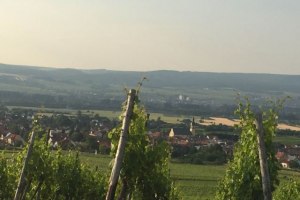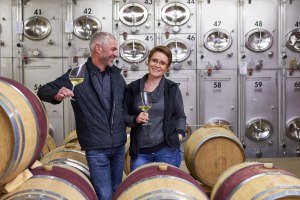Ockenheimer Hockenmühle
The mill on the hill of Hucco
“in de Hocke gehen” (engl. to squat) means to bend the knees, to make oneself very small. Hence the name? No. The location was first mentioned in a document in 1348 with the name "hinter deme huckenbule". Middle High German "buhil" means hill. And "Hucken" probably comes from a personal name. The mill on the Hucco hill. Riesling, Silvaner, Müller-Thurgau and many more grow on deep, chalky loam and clay marl.
> Hiking trails of the village Ockenheim https://ockenheim.de/tourismus/wanderwege/
> To the other sites of Ockenheim: Ockenheimer Kreuz, Ockenheimer St Jakobsberg



















